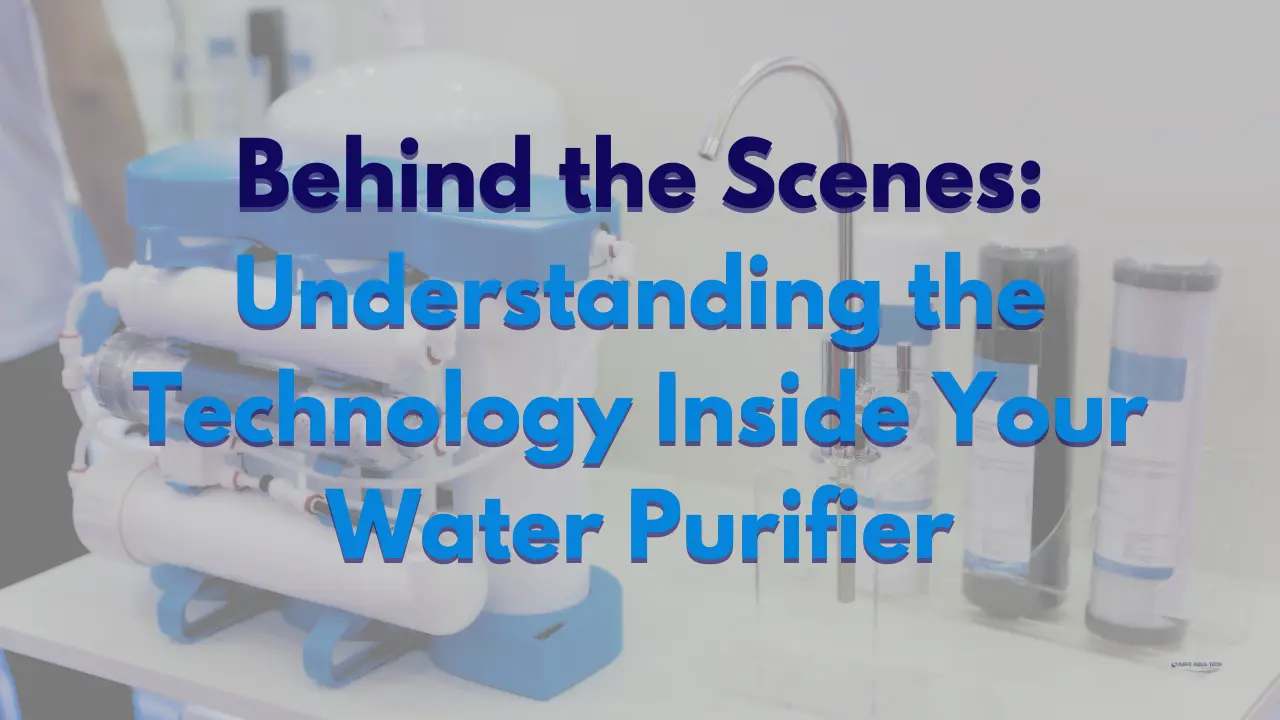
Behind the Scenes: Understanding the Technology Inside Your Water Purifier
In today's world, where concerns about water quality and safety are increasing, the importance of a reliable water purifier cannot be overstated. Whether it's removing impurities from tap water or ensuring access to clean drinking water in remote areas, water purifiers play a crucial role in safeguarding our health and well-being.
But have you ever stopped to wonder about the intricate technology that powers your water purifier machine? From simple filtration systems to advanced purification techniques, a lot is going on behind the scenes of the water purifier machine to ensure that the water coming out of your tap water purifier is safe for consumption.
Let's delve into the fascinating world of water purification technology and explore how these devices work their magic to deliver clean, healthy water to your home.
Understanding the Basics: Filtration
The filtration system is the core of the most water purifiers they are designed to remove any physical impurities from the water. This can be sediments, debris, and particles that may present in tap water. Filtration typically involves passing the water through several layers of material, like activated carbon or ceramic, that traps the contaminants while allowing clean water to pass through.
Activated carbon is highly effective at removing chlorine, sediment, and organic compounds that can affect the taste and odour of water. Its porous structure acts like a sponge, absorbing impurities as water flows through.
Going Beyond Filtration: Purification Techniques
While filtration is effective at eliminating many impurities, it may not address all the potential contaminants, particularly microscopic pathogens like bacteria and viruses. That's where advanced purification techniques come into play.
One common method used in water purifiers is ultraviolet (UV) sterilization. UV light is capable of disrupting the DNA of microorganisms, rendering them unable to reproduce and effectively neutralizing them. This ensures that even the tiniest of pathogens are removed from the water, that offers an extra layer of protection against waterborne illnesses.
Another popular purification method used in tap water purifier is the reverse osmosis (RO), that relies on a semi-permeable membrane to eliminate ions, molecules, and larger particles from water. By applying pressure to the water, contaminants are forced through the membrane, leaving behind clean, purified water on the other side. RO systems are highly effective at eliminating dissolved solids, heavy metals, and other harmful substances from tap water.
The Importance of Maintenance
While water purifiers are developed to deliver clean, safe water, proper maintenance is essential to ensure their continued effectiveness. Regularly replacing filters of the water purifier machine, cleaning components, and servicing the system as per the guidelines of the manufacturers are crucial steps in maintaining optimal performance.
Further, it's important to assess the quality of water quality, especially if you live in an area with known contamination issues or rely on well water. Testing kits are readily available and can help identify any potential problems that may require attention.
Exploring Advanced Purification Technologies
In addition to UV sterilization and reverse osmosis process of water purifier, there are other innovative purification technologies making waves in the world of water treatment.
Ion Exchange
Ion exchange is a process where ions in the water are exchanged for ions attached to a resin or medium. This method is particularly effective at removing minerals like calcium and magnesium, which can cause scaling and affect the taste of water. Ion exchange is often used in conjunction with other purification methods to deliver water that is both pure and mineral-balanced.
Ozonation
Ozonation includes treating water with ozone, a powerful oxidizing agent, to disinfect and remove impurities. Ozone is highly effective at destroying bacteria, viruses, and organic compounds, making it a popular choice for water treatment plants, water purifier machines and industrial applications. In home water purifiers, ozonation can be used as an additional step to ensure water safety and quality.
Activated Alumina
Activated alumina is a highly porous material with a large surface area, making it effective at adsorbing fluoride, arsenic, and other contaminants from water. It works by the process of attracting and trapping molecules within its structure, effectively removing them from the water. Activated alumina filters are commonly used where fluoride or arsenic levels exceed recommended limits.
Smart Features for Added Convenience
Modern water purifiers are not just about purification—they are equipped with smart features designed to enhance convenience and usability.
Digital Monitoring and Alerts
Many water purifiers now feature digital displays and monitoring systems that offer real-time information about water quality and filter status. Some models even have built-in sensors that detect contaminants and send alerts when required filter replacements or maintenance are required.
Wi-Fi Connectivity
Wi-Fi-enabled water purifiers allows you to monitor and control your device remotely with the help of smartphone app. This feature is handy for busy households or individuals who want to stay on top of their water quality without the hassle of manual checks.
Eco-Friendly Design
With increasing awareness of environmental issues, many water purifier manufacturers are incorporating eco-friendly features into their products. That involves energy-efficient operation, recyclable materials, and minimal water wastage during the purification process.
Conclusion
Your water purifier is more than just a machine—it's a sophisticated piece of technology designed to provide you and your family with access to clean, safe drinking water. From basic filtration to advanced purification techniques, these devices work tirelessly behind the scenes to remove impurities and ensure peace of mind.
By understanding the technology inside your water purifier and taking steps to maintain it properly, you can enjoy the many benefits of clean, healthy water for years to come. So the next time you fill up your glass from the tap, take a moment to appreciate the science and engineering that make it all possible.

